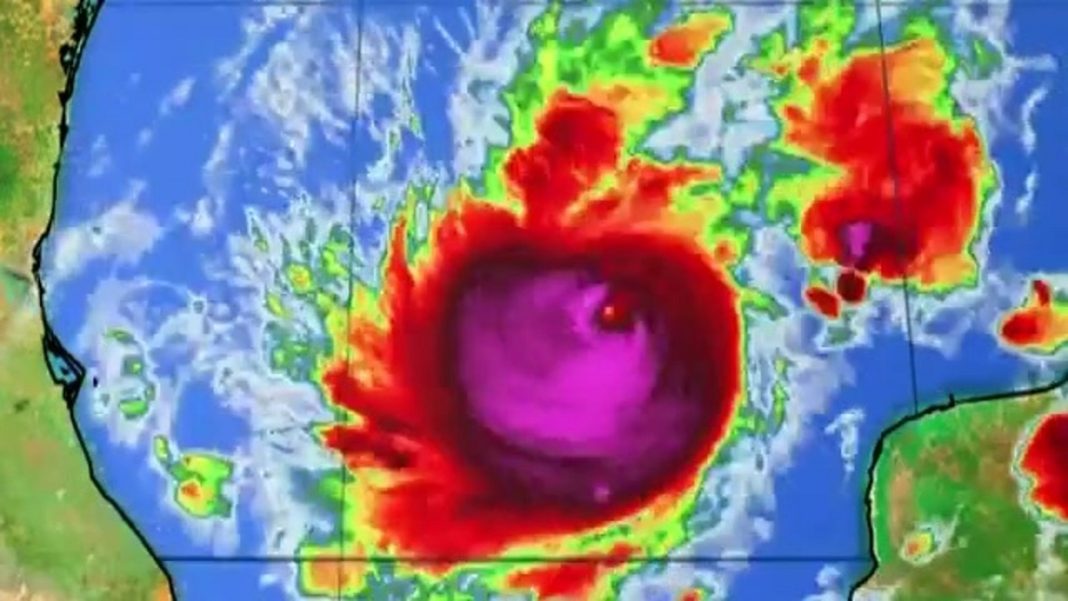As Hurricane Milton barrels toward Florida’s Gulf Coast, the region finds itself grappling with the aftermath of another recent disaster—Hurricane Helene. Just two weeks ago, Helene wreaked havoc, resulting in the loss of at least 230 lives across its path from Florida to the Carolinas. Now, as Milton intensifies in the eastern Gulf of Mexico, residents face the daunting task of preparing for yet another potential catastrophe.
Milton, which boasts maximum sustained winds of 180 mph, is projected to make landfall in the Tampa Bay region on Wednesday. This area, home to over 3.3 million people, has not experienced a direct hit from a major hurricane in more than a century. The storm is forecasted to maintain its hurricane strength as it tracks across central Florida, possibly sparing other states still recovering from Helene’s devastation. “This is the real deal here with Milton,” warned Tampa Mayor Jane Castor, emphasizing the need for residents to take the impending storm seriously.
In anticipation of Milton’s arrival, Florida Governor Ron DeSantis has stressed the importance of clearing debris left by Helene, as these remnants could turn into dangerous projectiles amidst high winds. Local officials reported that over 300 vehicles were deployed to collect debris ahead of the storm, but frustration remains palpable among residents. Sarah Steslicki, a Belleair Beach resident, lamented the delays in debris removal, fearing that any lingering items could become “flying missiles” in the hurricane’s wake.
The National Hurricane Center has warned of a potential storm surge reaching 8 to 12 feet in Tampa Bay—unprecedented levels for the region. This surge, combined with forecasts of 5 to 10 inches of rain across mainland Florida and the Keys, raises concerns about widespread flooding, further complicating the already precarious situation for residents still reeling from Helene. “It’s a huge population. It’s very exposed, very inexperienced, and that’s a losing proposition,” commented Kerry Emanuel, a meteorology professor at the Massachusetts Institute of Technology. His insights underline the unique vulnerabilities faced by the Tampa area, particularly with a population that may not be accustomed to such severe weather events.
As evacuation orders were issued for areas adjacent to Tampa Bay and mobile homes, the rush to flee the impending storm began in earnest. Many residents recalled the chaotic exodus during Hurricane Irma in 2017, when approximately 7 million people were urged to evacuate, causing severe traffic congestion and fuel shortages. By Monday morning, gas stations in Fort Myers and Tampa were already running dry, even as more fuel supplies were on the way. DeSantis reassured residents that efforts were underway to ensure that hundreds of thousands of gallons of gasoline and diesel were available.
Among those preparing to evacuate is Candice Briggs, who, along with her husband and three young children, faced the challenge of relocating once again after Helene flooded their Seminole home. “Most of the tears I’ve cried have been out of exhaustion or gratitude,” she said, capturing the emotional toll that repeated evacuations can take on families. Meanwhile, Tanya Marunchak, who faced flooding in her Belleair Beach home, found herself torn between the desire to evacuate and the belief that their sturdy three-story house could withstand Milton’s threats.
As U.S. Representative Kathy Castor underscored the scale of the federal response, with 7,000 federal workers mobilized to assist, the urgency of the situation became evident. President Joe Biden declared an emergency for Florida, highlighting the gravity of Milton’s approach. In Mexico, where the storm’s effects are also expected, preparations were underway, with residents lining up for evacuation ferries from low-lying areas vulnerable to flooding.
Experts have noted that Milton’s rapid intensification—gaining 92 mph in just 24 hours—can be attributed to the Gulf of Mexico’s unusually warm waters, fueling the storm’s growth. This phenomenon is not unique; similar rapid intensifications have been observed in past hurricanes, including Wilma in 2005. As Milton approaches, schools in Pinellas County are being transformed into shelters, and travel disruptions are anticipated at airports across the region.
The frequency and severity of storms impacting Florida this season raises questions about climate patterns and preparedness. It has been two decades since the state faced such a barrage, reminiscent of the historic 2004 hurricane season when five storms crossed its path within six weeks. With Milton’s approach now looming large, the challenges for residents, emergency services, and local governments are considerable, and the lessons from past storms will undoubtedly shape the response to this latest threat.
As the Gulf Coast braces for impact, one thing is clear: resilience and preparedness will be tested once again in the face of nature’s relentless force.


